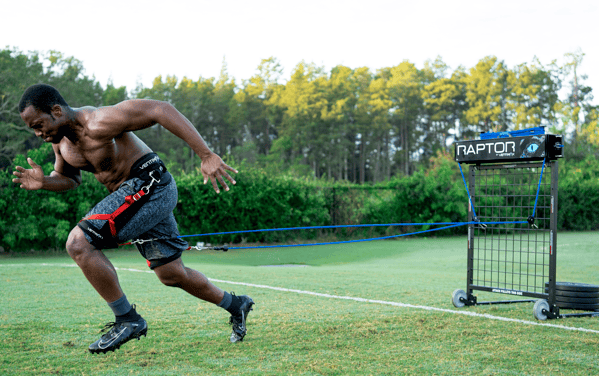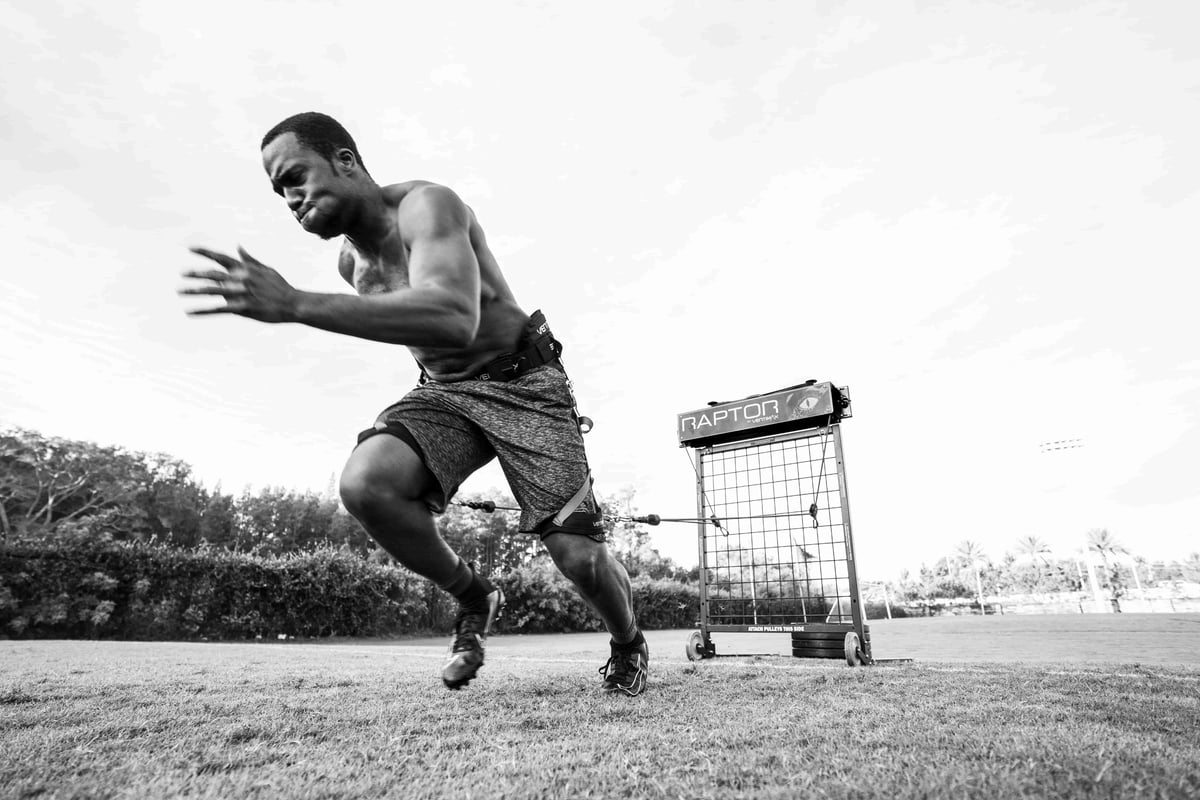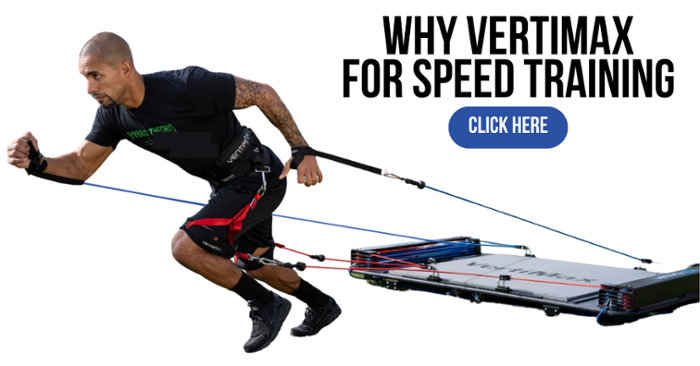Running and Jogging is one of the most popular sports in the world. Naturally, most runners want to know how to increase running speed to excel in their sport or event.
According to an article written by David Lange on statista.com, in 2017, almost 60 million people in the United States participated in running, jogging and trail running. This is an incredible amount of people who take part in a sport that requires very little equipment. From my experience, most people who run think the only things they really need to run is a good pair of running shoes and appropriate attire.
As a health & fitness professional, I know first-hand that not only do you need a good pair of shoes and the right clothes, but there are several types of training that people need to invest in to be successful, but to remain as injury free as possible.
Types Of Training Needed To Improve Running Skills
- Running itself (Hills, Intervals, Fartlek’s & Steady state run)
- Strength & Resistance Training (To develop an injury resistant body)
- Mobility/Flexibility (Increase stride length/reduce injuries)
- Recovery (Sleep, Rest, Nutrition)
In this article, we are going to look at 8 expert tips from various sources that can help any runner, regardless of the distance, to increase running speed.
8 Expert Tips To Increase Running Speed
1. Focus on Proper Form
Just like performing an exercise in the gym, proper form and technique while running can help to increase speed, improve efficiency and reduce the chance of injury. Below are some recommendations as outlined in the article How to Master Proper Running Form by Emily Cronkleton.
Tips for Proper Form
- While jogging, maintain good posture, engage your core, and gaze forward.
- Avoid tilting your head down and slumping your shoulders.
- Broaden your chest and keep it lifted as you draw your shoulders down and back.
- Keep your hands loose and use a relaxed arm swing. Avoid crossing your arms in front of your body.

To prevent injuries to your lower body, use a mid-foot strike, and avoid hitting the ground with your heel. This allows your foot to land directly under your hip as you drive your body forward. A heel strike may cause your leg to slow down your stride and stress your knees.
Expanding on the area of good posture & core, WebMD.com discusses the importance of performing exercises that focus on the abdominals, upper back and low back muscles that connect to your spine and pelvis. These muscles move your torso by flexing, extending, or rotating your spine. Others stabilize your pelvis and spine in a natural, neutral position.
2. Increase Mileage Each week
Increasing distance over time will increase endurance. Endurance plays a role in increasing speed. In the article, Want to Run Faster? Build Aerobic Endurance by Jeff Gaudette, he states that, “if you’re a runner who is trying to improve your finishing speed or you fade during the last mile, your training time would be better spent improving your aerobic capacity, not necessarily your absolute speed.”
Traditionally, the rule of thumb for increasing mileage and staying injury free has been a 10% increase each week. The principle here is that a runner’s training volume shouldn’t increase by more than 10 percent each week. For example, if someone is running 20 miles/week one week, the next week should be no more than 22 miles. Check out The New Guide for Increasing Your Mileage.
There are several ways in which one can keep track of running mileage. These days most runners keep track of mileage with some sort of GPS wearable device (watch, cell phone and/or a chest strap) like Polar, Fitbit, Strava or Garmin that connects to a supportive app. Some choose to track by activating their watch or a running app on their phone while they the run. Some very popular running apps include Strava and MapMyRun.
3. Introduce Interval Training
Interval running is an efficient way to maximize aerobic improvement while minimizing the overall time spent per workout. It also fits well into the ACSM guidelines of getting at least 20 minutes of vigorous aerobic exercise 3 times per week.
The definition of Interval running includes periods of high intensity running alternating with low intensity running or walking. Interval running can keep intensity high, but decrease the overall running training time. Below is an example of a beginner interval running program as suggested in the article Interval Running For All Levels: A Guide To Getting Started.
Beginner Interval Running Workout:
- Complete 5 minutes of a light jogging warmup
- Run 30 seconds at 75% intensity followed by 30 seconds at 25% intensity
- Repeat for 3 cycles on week 1
Perform the workout twice per week, adding a cycle every week for 4 weeks.
Tip: Practice interval running on the VertiMax V8 or Raptor for additional gains!

4. Introduce Tempo Training
In the article, A Step-by-Step Guide to Tempo Runs, Jason Fitzgerald provides three definitions for tempo training.
Tempo Training Definition
- Comfortably hard. A pace that’s faster than “moderate” but not exactly “hard.” If you have a high training age and prefer running by feel or perceived effort, this may be the most helpful definition for you.
- The pace you could race for an hour. For some runners, their tempo pace is similar to or about the same as their 10k pace.
- 85-90% of maximum heart rate. If you train by heart rate (learn how to calculate your max heart rate here), this is a valuable way to ensure you’re in the right range for your tempo run.
He also describes the benefits of Tempo Training to be that of increasing lactate threshold and mental toughness.
Classic Tempo Workout
- Warm up by walking for three minutes.
- Run at an easy, yellow-zone effort for 10 minutes.
- Run at tempo effort for 20 to 30 minutes. (Start with 20 the first time you do this work out, then gradually ramp up as you become more experienced.)
- Run at an easy, yellow-zone effort for 10 minutes.
- Cool down by walking for three minutes.
Total Time: 46 to 56 minutes
5. Introduce Hill Training
There are several benefits of hill training. These include but are not limited to:
- Improve leg strength
- Quicken your stride
- Improve your cardiovascular system/Vo2 max
- Build muscle power and speed
- Hill training either outside or inside on a treadmill should there be no hills in your area or if the weather does not permit safe hill training e.g., Wet or Icy.
Click the link for an example of a six-week hill training plan.
6. Allow for Recovery Time To Avoid Injuries
Recovery is a key component for any athlete, sports enthusiast or fitness junkie not only to improve performance, but remain injury free. In recent years, the whole concept of ‘more is better’ or ‘no pain no gain’ has fallen by the wayside. For runners specifically, not allowing for recovery time can lead to injuries, especially since the sport is fairly high impact.
Common Injuries
- Runners Knee
- Shin splints
- Achilles Tendinitis
- Plantar Fasciitis
Below are a few indicators that you should take a day off or decrease intensity for the day in order to avoid an injury from over-training:
- You are feeling tired or unmotivated
- You have a lot of muscle soreness from a previous workout
- Previous workouts have not gone well (decreased performance, e.g., slower running times)
If you experience any or these signs, it is a good sign that taking a day off from running might be a good idea. Instead, maximize recovery so you can come back feeling better and stronger for your next run!
7. Healthy Lifestyle
Regardless of how much you do to ‘improve speed’ through running itself or work inside the gym, it’s only a small piece of the entire puzzle to achieving your running goals. Leading a holistic, healthy lifestyle is the key to not only achieving goals but for long-term success physically, spiritually and mentally. Here are just some of the other elements beyond exercise itself involved in leading a healthy lifestyle:
- Healthy eating
- Stay hydrated
- Get enough rest (rest days, sleep)
- Variety in your workouts
- Surround yourself with positive people
8. Appropriate Attire
Running by nature is a high impact sport. To make running more enjoyable and to help reduce injuries while running, make sure you invest in a good pair of shoes designed specifically for running. I highly recommend going to a store that specializes in running shoes and consult with a store associate who can assist you in getting the right shoes for not only your goals but your running style.
Besides shoes, there are clothes and accessories designed specifically for your specific style of running. REI provides recommendations for what to wear on a run in warm or cold weather.
Aside from what is recommended above, you know your body best! Listen to your body and let that guide you. Check out more on Speed Training. For specific individual needs, consulting a Coach will always lead to the best results. A Coach can design a specific program base on how you move and the sport that you love to play!





.png?width=110&name=Listing%20Image-basketball%20ladder%20drill%20%20(350%20x%20350%20px).png)














